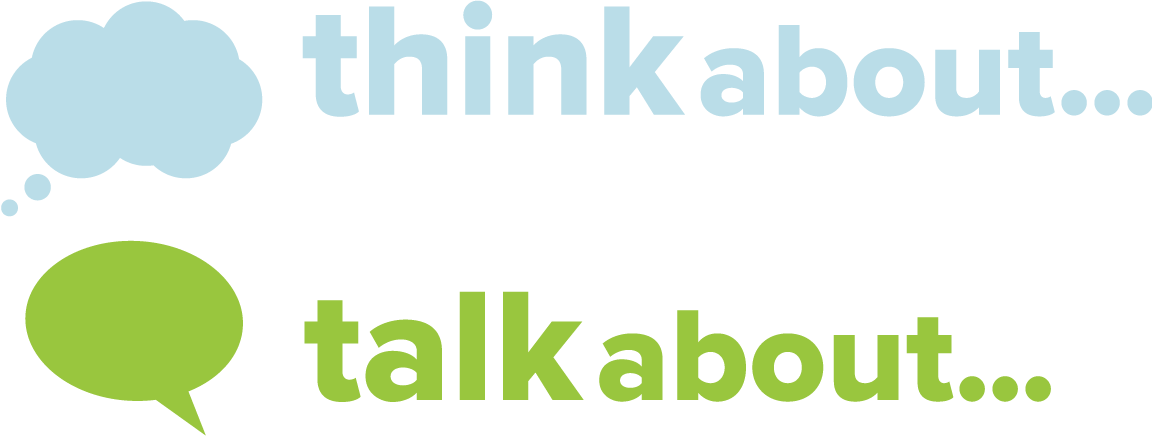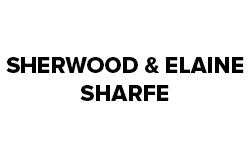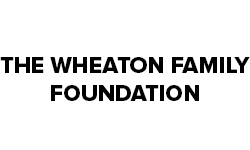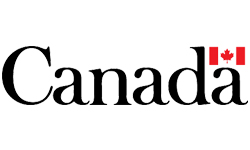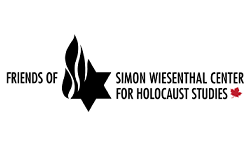Part B: Learning Plan
- Examine and analyze factors that contribute to quality of life, including material and non-material factors.
- Consider how they can contribute to initiating and guiding change, locally and globally in environmental, social, and economic areas.
- Explore examples of injustice or abuses of power and consider how different groups of people may be affected.
QUESTIONS TO GUIDE INQUIRY
Teachers may want to consider putting the questions into a “Before, During, After” chart to note the changes in students’ thinking as a result of the inquiries.
- How do you determine fairness?
- Is a multicultural society fair for all?
- If a rule/law impacts people differently, is it fair?
- If opinion reflects personal perspective, is everyone’s opinion, right?
- What might be another perspective?
- What role does evidence play in forming opinion?
- What is the impact of past experience on decision-making?
- What do you need to consider when you choose to influence others?
- How do your actions impact others?
- Should you be able to live the way you choose regardless of the impact on others, locally, globally?
- What is your responsibility to balance between needs and wants?
- What will you do with your new learning?
Vocabulary
- Fair – fairness
- Human Rights
- Injustice
- Institutions`
- Justice
- Needs
- Quality of Life
- Sustainability
- Economic sustainability
- Environmental sustainability
- Social sustainability
- Wants
CONNECT TO TOPIC AND SURFACE STUDENTS’ THINKING ABOUT …
*In Canada, women, 21 years of age and older, were extended the right to vote in 1918 in federal elections This right did not extend to all women however. Women of colour were not allowed to vote federally or provincially until 1940. Indigenous women covered by the Indian Act could not vote in Federal elections until 1960.
Check this link for more information: http://www.cbc.ca/strombo/news/women-the-right-to-vote-in-canada-an-important-clarification.html
What are the impacts of injustices? How is power used or misused by governing bodies?
Process
- Pose the questions and allow students to discuss their understandings and thoughts on fairness. What impact does “privilege – especially unearned advantage or white privilege” have on fairness?
- Determine what the students know, understand, need to be able to do to master/answer the essential questions. Additional guiding questions can be added as required. Students are encouraged to add their questions to the others.
- What does the word fair mean to students?
- How do students determine fairness?
- Does fair mean equal?
- Is Saskatchewan a “fair” province of equal opportunity? Why or why not?
- Are people treated equally, treated fairly?
- Should life be fair? Should life be just?
Present the definition below. Discuss the meaning with students and the revisit the questions above. Has the student thinking changed?
Injustice – the practice of being unjust or unfair
“Life isn’t fair, and that quality is exactly what defines injustice: something unfair that happens, often in violation of a basic human right.
In the early 19th century in the United States, women could not legally vote, but they fought back against this injustice and eventually won voting rights.* The word comes from a Latin phrase that literally means “not right,” and injustice is the opposite of justice, which is a fair and righteous act. Injustice can be general or specific, like the injustice suffered by poor people everywhere, or an individual act of injustice committed by some unkind person.”
“Text from Vocabulary.com, Copyright ©1998-2016 Thinkmap, Inc. All rights reserved.”
- What examples of injustice do students have?
- Personally
- In the community
- Provincially
- Nationally
- Globally
- Chart the examples against the Diversity Wheel found in part C. Are there trends to the injustice examples? Are certain locations, areas of diversity more predominant? Have students examine the use or misuse of power evident in the situation. (Studied in Engaged Citizenship area)
i.e. Authority, Force, Influence
- What are students noticing? Is there a trend?
- Save the student thinking for later reference.
Teachers can facilitate student understanding by helping students identify some of the big ideas and themes that are surfacing.
DEVELOPING UNDERSTANDING
http://www.youthforhumanrights.org/what-are-human-rights/videos/born-free-and-equal.html
Teachers may also want to scaffold the inquiry by beginning with the family. Students can consider why and how they are looked after within their family structure.
Divide class into groups and give each group a specific area of research to learn about and present to class. Each group must find out the information in the question posed below. Encourage students to present information learned in a variety of modes including speaking, writing, drama, multimedia, or other modes so that all students have an entrance point for demonstrating their learning and understanding.
Foreshadowing or front-loading Process
- Talk with students about the questions they are researching. Based on their studies in the other areas of citizenship (Engaged Citizens connected to Self, Community, and Place) have students hypothesize:
- What are students thinking they will find in their research?
- What evidence do students have to support their thinking?
Begin with Canada and then move to chosen country to research the relationship between people and their governments.
Beginning the inquiry with Canada allows the whole class to work for a single purpose and surfaces potential misunderstandings or areas where specific teaching. Students could then use the jigsaw research method to research chosen countries.
Consider the people in the community who could come into the classroom or agree to be interviewed by students to share their expertise and offer a real-life perspective.
- Newcomers to the community
- Elders
- Human Rights officials
- What responsibility do governments have to address/maintain common good?
- What responsibility do governments have to treat the people they govern fairly?
- What processes do governments put in place to deal with the diversity in the people they govern?
- What are human rights?
- Canada has Human Rights Commissions in every province. Why do students think this is so?
Surface additional questions that students have.
- Identify the government’s beliefs and policies on:
- i) human rights,
- ii) treatment of minorities,
- iii) history with Indigenous peoples,
- iv) infrastructure for health, and education (including reference to residential schools and the intergenerational impact of those experiences).
- Develop a summary statement that indicates what students learned about the government’s beliefs and policies toward each area researched.
- Research laws that indicate the way the governments feel toward various diversity groups i.e. the young, the disabled, the elderly and others.
- i) Indicate the status of these groups in the country;
- ii) Laws impacting groups;
- iii) Evaluate the reasons for laws; and,
- iv) Indicate the effectiveness of such laws.
- Develop summary statements that capture what students learned about the government’s beliefs and policies toward each group of people.
Have students complete the chart in the appendix, page 39 to summarize their research. Post the charts for comparison. Identify the geographic location of the countries and consider the standard of living in each country.
- Were there any surprises in their research? (Refer back to hypotheses)
- What kind of power interaction is evident. Is power being well used, misused, or abused? Give evidence to support their thinking.
- What similarities and differences are students noticing? Are there any categories connected to the Diversity Wheel (part C) that are becoming evident? What big ideas are surfacing?
- `What are students inferring? What makes them think that?
APPLY AND EXTEND KNOWLEDGE

U. of S. Dept. of Ed. Marketing and Communications,
University of Saskatchewan
- How would students rate Canada in terms of the treatment of diverse groups of people compared to countries studied? (i.e. Are they doing a good job?)
- How would students rate the treatment of diverse groups by the governing body of the country they researched? Which categories of diversity are most often targeted or persecuted?
- What might be the reasons for the difference between Canada’s beliefs and those of other countries?
- Bulletin board experiences
- Identify on a map the country where the injustices occurred.
- What areas of diversity, identified on the diversity wheel, are targeted?
- How would students rate the identified bulletin board experiences of injustice, misuse and/or abuse of power in comparison to other countries studied? Are there commonalities? Differences?
- What are students inferring about some of the differences they identified?
EVIDENCE OF LEARNING
What processes do governments or governing powers put in place to deal with the diversity in the people they govern?
What are the impacts of injustices, misuses, or abuses of power by governing bodies?
- What did students learn about injustices and use and abuse of power that is important to remember?
- Why does it matter?
- What do they want to do with this new learning?
In groups have students:
Choose one of the bulletin board examples of injustice or a specific example of injustice from one of the groups within a researched country:
- Tell what they have learned and why they think it is important to know.
- Tell why their learning matters.
- Tell what they think they could do about what they learned if they had the power they needed.
- Propose possible changes needed to address the situation. What kind of power is needed to effect these changes? (Influence, authority, force)
- Propose suggestions to prevent further injustice or use and abuse of power.
- Consider changes in:
- human behaviour
- institutions
- education and/or health practices
- laws and policies
- other?
CONNECT TO TOPIC AND SURFACE STUDENTS’ THINKING ABOUT …
How does quality of life compare across countries? What are the critical factors for quality of life?
Outcome:
Examine and analyze factors that contribute to quality of life, including material and non-material factors.
Personal and Group Inventory – the purpose of this inquiry is to have students understand the difference between needs and wants.
- Have students divide their day into three portions – morning, afternoon, evening.
- Brainstorm with the class things that they use every day within those three time periods. ie. Food, clothing, technology, appliances, machinery, etc.
Have students group their lists into needs and wants.
- Based on the student lists develop a definition for the words ‘needs’ and ‘wants’. (use Frayer vocabulary model) Using the generated definitions, revisit the lists to see if student thinking has changed. Can anything from one list be moved to the other?
- Based on the students’ study of countries bordering the Atlantic have them hypothesize what might be on the lists of their peers in other countries.
- Revisit their lists to see if any changes need to be made regarding the inclusion under needs or wants.
- What are students noticing about the differences in the lists? Why do they think those differences exist?
- Chart student answers and save for reflection at the end of the study.
Student Quality of Life Summarizing – determine what students think contributes to their quality of life. Their thinking will provide a basis for the next part of the inquiry.
- What does “Quality of Life” mean to students?
- What makes your life satisfactory – good?
- What is necessary for a satisfactory quality of life?
- Which is more important to your quality of life – needs or wants? Explain your thinking.
DEVELOPING UNDERSTANDING
OECD (Organization for Economic Cooperation and Development) – Better Life Index – http://www.oecdbetterlifeindex.org/
The categories examined under the Better Life Index are listed below.
1. Housing
2. Income
3. Jobs
4. Community
5. Education
6. Environment
7. Civic Engagement
8. Health
9. Life Satisfaction
10. Safety
11. Work-Life Balance
Unpack each of the indicators in the OECD list to make sure students understand what they involve. Assign groups of students one of the indicators, to research and provide examples of, to teach to the class so that the meanings are understood.
- Why would these indicators be included in the Better Life Index?
- What should be added? Explain the thinking.
- What should be removed? Explain the thinking.
- How would students order the indicators if they were working from most important to least important? (see website, http://www.oecdbetterlifeindex.org/)
Describe the quality of life for people/youth in Canada as compared to people/youth in countries bordering the Atlantic Ocean? What impacts/influences the quality of life?
1. Have students choose a country, including Canada, to research the quality of life factors/indicators and identify:
- the access people have to:
- education and technology,
- shelter, food and water,
- health care,
- sport and recreation,
- other
- country’s labour practices
- country’s inclusion, diversity, or marginalization practices
Encourage students to use various sources of data including a quality of life index, maps, graphs, and charts.
2. Identify sources of wealth in the assigned countries including:
- natural resources
- industries
- Which countries are most wealthy in terms of resources?
- Which countries are most powerful?
- Which countries have governments/rulers/ governing bodies that bear responsibility for their citizens?
- Which countries enjoy higher qualities of life?
Develop summary statements answering:
- What is the relationship between wealth and resources and the amount of power and authority countries have?
- How does the presence or absence of wealth and resources impact the quality of life? What is the relationship between wealth and resources and the quality of life?
- What is the relationship between wealth and resources and a duty to care for the citizens of a country?
- What impact does location and culture have on quality of life?
- How does history impact quality of life?
- What is the impact of:
- technology,
- access to energy,
- transportation,
- communication systems
- What are some of the reasons that might explain the differences in the quality of life?
- How do the choices that Canadian youth make to support their lifestyle, impact the lifestyle/quality of life of youth in other countries?
APPLY AND EXTEND KNOWLEDGE
* More information can be found at:
http://jamesshelley.net/2011/03/indigenous-wealth/
http://www.ted.com/talks/wade_davis_on_endangered_cultures
http://www.pachamama.org
https://www.pachamama.org/social-justice
Students have been investigating the Western Concept of Wealth. In this section students explore the Indigenous Concept of Abundance and consider how the application of that concept would impact the perceptions of power and authority. Examples of Indigenous concepts about wealth follow.
Indigenous Concepts of Wealth
Many indigenous societies define wealth as the strength of one’s social relations, not as a ranking within a monetary system. To be rich does not mean the individual has a set of numerical units that have value in some currency system. Instead it means to be connected to people and resources through the multiplying and expanding tentacles of community.
If man is connected to the environment and place, then wealth means being the strongest part of the web. Compare this idea of wealth with a Western, fiscal definition of wealth. Students may find it interesting that the two definitions go in such opposite directions. Indigenous wealth is measured by the individual’s degree of connectivity to the whole. Western wealth is measured by the collection of assets that a person can accumulate.
James Shelley, speaker on Indigenous wealth tells us that we are all indigenous to planet earth — and the indigenous wealth of being connected to one another is the only thing that can truly make us rich.
“For many indigenous communities, wealth is linked to the application and preservation of ancestral knowledge and cultural traditions, and the depth of one’s connection to the environment and the sacred.”
For some modern governments, wealth is more defined in terms of the possession of goods, of newly acquired knowledge like technology, and an ability to use and manipulate the environment to create new avenues of monetary revenue.”
By Alan Pierce, Dec. 28, 2012
Retrieved from https://web.archive.org/web/20160603034330/https://www.pachamama.org/blog/we-are-not-poor-people-learning-from-indigenous-perspectives-of-wealth, Nov. 2017
For more information about the 7 generation principle visit:
http://www.edu.gov.mb.ca/k12/docs/policy/abpersp/ab_persp.pdf
https://www.mollylarkin.com/what-is-the-7th-generation-principle-and-why-do-you-need-to-know-about-it-3/
http://7genfoundation.org/7th-generation/
http://fngovernance.org/resources_docs/7_Generations_7_Teachings.pdf
http://nativeinsight.blogspot.ca/2012/11/seventh-generation.html
The Seventh (7th) generation principle is known and taught among Indigenous peoples. It means that future generations must think about the decisions they are making and the impact those decisions might have on future generations or your descendants (children) seven generations into the future. What can we learn from this principle?
The Creator put the First Nations on the land and told them to care for Mother Earth. All creation is interdependent and equally important.
Components of First Nations Traditional Worldviews pg. 29 Treaty Essential Learnings
- Research and compare the beliefs of Indigenous people in Canada and countries bordering the Atlantic.
- Identify the views and beliefs of Indigenous people about wealth and what makes a person or society wealthy.
- Note the diverse approaches to natural resource and land use.
- Indicate how these diverse approaches have come into conflict and been in harmony in various time periods and locations.
- Present information on beliefs using a variety of representation styles.
- What are the primary differences? What are the similarities?
- Develop a summary statement that describes the Indigenous concept of wealth in the country researched.
- What are the similarities and differences between Indigenous peoples in all countries?
- If Indigenous concepts of wealth were applied how would the quality of life rankings be impacted in the various countries studied?
- How would the application of Indigenous concepts of wealth, impact the perceptions of power and authority in the countries studied?
- What changes might be needed to bring those countries closer to being wealthy according to Indigenous standards?
- How would the application of Indigenous concepts of wealth impact student lives? Would students be considered wealthy? What would change?
EVIDENCE OF LEARNING
- Why would different countries have different qualities of life?
- Are countries using the right measures to determine quality of life?
- How could the qualities of life/standards of living be made fairer?
How does quality of life compare across countries? What are the critical factors for quality of life?
- In groups have students present their thinking on the following:
- What is the quality of life like for people/youth in Canada as compared to people/youth in countries bordering the Atlantic Ocean?
- What impacts/influences the quality of life?
- How does your lifestyle impact the standards of living globally?
- Why is it important to understand this?
- What will you do as a result of your learning?
Present student understandings in a variety of ways i.e. infomercial, magazine campaign, etc.
Concepts of Wealth
Students have been exploring Western world concepts of wealth and Indigenous concepts of wealth. Which do they prefer and why? Give evidence to support their thinking.
CONNECT TO TOPIC AND SURFACE STUDENTS’ THINKING ABOUT …
Contribute to initiating and guiding environmental, social, and economic sustainability and change in local and global communities.
Students will consider their lifestyle choices and begin to understand the impact that their choices have on the community – locally, nationally, and globally.
What responsibility/part did you (students) play in the Bangladesh Clothing Factory Collapse of April 2013 that killed more than 1100 workers and injured thousands more?
Make students aware of the Bangladesh Clothing Factory Collapse – see lesson resources – Understand working conditions and workers
- Have students revisit their needs and wants lists. Begin to inventory the origin of the objects/clothes on those lists to determine where things they use originate/come from. Chart the countries.
- Have a collection of items on your desk, collect items from the classroom – books, clothing, fruit, etc.
- Check the tags on clothing, lunch kits, school supplies, desks, find origin of product – list/identify and chart countries of origin.
(Save responses for later reflection)
- Make a general statement about how each student’s daily life is influenced by other countries in the world. – linking to interdependence
- How do student’s daily life choices impact other countries?
- How does meeting their needs impact issues of sustainability relating to:
- The environment?
- Economic sustainability?
- Social sustainability?
- Definition – social sustainability – improving local and global social conditions of workers, their families, communities and society at large. – https://web.archive.org/web/20161106044352/http://www.ic.gc.ca/eic/site/csr-rse.nsf/eng/rs00590.html
Make sure students understand the parameters of the three kinds of sustainability concepts: environmental, economic, and social sustainability.
DEVELOPING UNDERSTANDING
- Research practices and examples of the following sustainability issues in the assigned country:
- Social sustainability
- child labour
- enslavement
- sweat shops
- Environmental sustainability
- consumption of scarce resources
- Economic sustainability
- employment opportunities
- Identify any efforts by individuals and communities to initiate change in any of the sustainability areas.
- Social sustainability
- What changes would they make to their original general statement about how each student’s daily life is influenced by other countries in the world?
- How do student’s daily life choices impact other countries?
- How does meeting their needs impact issues of sustainability relating to:
- the environment?
- economic sustainability?
- social sustainability?
- Why does this learning matter?
- What do students think they should do about this?
APPLY AND EXTEND KNOWLEDGE
- Identify:
- Who, what, where, why
- What has happened as a result of that disaster?
- What has been the corporate world response?
- What has been the global response?
- What is student responsibility toward workers?
- What will be your personal response?
- How can Canadian citizens work to ensure this does not happen again?
EVIDENCE OF UNDERSTANDING
- What responsibility/part did you play in the Bangladesh Clothing Factory Collapse of April 2013 that killed more than 1100 workers?
- What is your action plan for harmonizing one’s personal lifestyle with collective social, environmental, and/or economic needs?
STUDENT CITIZENSHIP JOURNAL OPPORTUNITIES
Nelson Mandela, Amnesty International
Ambassador of Conscience 2006
- What does this statement say to you? What does it make you think?
- What responsibility do Canadian citizens have to be aware of global injustice?
- Respond to any of the essential questions.
© 2024 Concentus Citizenship Education Foundation Inc. All Rights Reserved.

